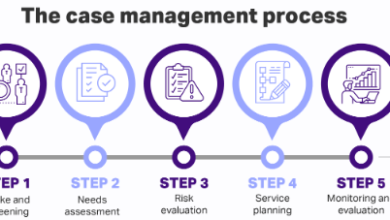
Top 7 secure web gateway solutions in 2025
In IT, one thing never changes: attackers adapt faster than static defenses. In 2025, Secure Web Gateway solutions are essential. More than 95% of web traffic is encrypted, providing threats with a hiding place.
Gartner says 80% of enterprises will use an SWG this year to inspect, filter, and control all web traffic. The best secure web gateways act as real-time policy engines, using identity, device status, and app behavior to decide what gets through. The right choice keeps speed, accuracy, and workforce needs in balance.
What Makes a Secure Web Gateway Relevant in 2025
An SWG’s job used to be blocking bad URLs. That is no longer enough. In 2025, the web is dynamic, encrypted, and full of cloud apps that bypass traditional controls.
A modern SWG must:
- Inspect encrypted traffic without slowing users down
- Enforce policy by user, device, and location
- Integrate with Zero Trust and cloud security tools
- Detect threats in real time using AI and threat intelligence
- Support hybrid and remote work without gaps
These capabilities define what sets the best secure web gateways apart. Next, let’s explore how leading solutions deliver on these essentials, helping you find the right fit for your organization’s security needs.
7 Best Secure Web Gateway Solutions in 2025
1. Scalefusion Veltar
Veltar’s secure web gateway solution delivers operational simplicity without sacrificing deep control. Many a times, teams are forced to choose between agility and visibility.
But, Veltar offers both. It unifies policy management for web, cloud, and private apps in a single console, eliminating fragmented configurations. Real-time inspection blocks malware, detects risky behavior, and prevents data leaks, whether users are on-site or remote.
Key features
- Category-based website blocklist for unsafe or non-compliant content
- Custom blocklists and allowlists to tailor access control
- Domain and IP-based rules with precise web filtering solution
- Cloud app access management to enforce corporate account logins for services like Google Workspace and Microsoft 365
- App bypass list for macOS to allow direct internet access for trusted applications
- Policy-based filtering integrated with device compliance checks
- Centralized management for hybrid and remote teams
Why IT Leaders Choose It
- Built for Modern Threats: Blocks AI-driven and emerging attacks, not just yesterday’s malware.
- Unified Control: One policy for web, SaaS, and private app access — no console switching.
- Self-Learning Defense: Adapts in real time to strengthen protection with every request.
- Automated Enforcement: Cuts manual workload for IT teams.
- Scalable Performance: Enterprise-grade security without latency trade-offs.
Why It May Not Fit Everyone
- High-Precision Security: Optimized for enterprises with complex, layered defenses — more capability than small setups may require.
2. Cloudflare Gateway
Cloudflare’s secure web gateway (SWG) is built into a Zero Trust framework, combining web filtering, DNS security, and app access on a global edge network.
It avoids this by inspecting traffic at the nearest edge, keeping latency low and user adoption high. It shines for hybrid teams, policies move with the user, blocking risky web requests before they escalate. For organizations embracing Zero Trust, it offers speed and simplicity without vendor sprawl.
Key features
- DNS, HTTP, and HTTPS filtering at the network edge
- Predefined and custom category-based policies for web and app access
- Inline traffic inspection for malware, phishing, and data loss prevention
- Isolation browsing option to open risky links in a remote environment
- Tight integration with Cloudflare Access for zero trust authentication
- Fast propagation of policy updates across the global network
- Real-time analytics and logging for traffic visibility and threat tracking
Why IT Leaders Choose It
- Tool Consolidation: Replace multiple point solutions with one platform.
- Faster Response: Unified policies speed up incident handling.
- Consistent Security: Same protection whether users are on-prem or remote.
Why It May Not Fit Everyone
- Best-of-Breed Preference: Not ideal for those wanting separate specialized tools.
- Unified Policy Requirement: Works best if you’re ready to standardize controls across all traffic.
- Full Platform Commitment: May require phasing out existing SWG, CASB, or ZTNA setups.
See also: Blending Technology and Human Touch: The Future of Brand Growth and Hiring
3. Zscaler Internet Access (ZIA)
Zscaler’s secure web gateway (SWG) is fully cloud-based with no hardware or traffic rerouting. Many SWGs slow users down; but Zscaler fixes this with fast, on-demand traffic inspection. It checks all web, cloud, and SaaS activity in real time, stopping malware, phishing, and data leaks without delays. Policies follow users, so security stays consistent on any device or network. For businesses with more remote workers, this level of protection is critical.
Key Features
- 100% cloud-delivered, no hardware needed
- SSL inspection with minimal slowdown
- Threat intelligence from 300B+ daily transactions
- Detailed policy control for apps, URLs, and file types
- Works with major identity providers for user-based rules
- Sandboxing for unknown files
Why IT Leaders Choose It
- Proven Scale: Handles millions of users without performance degradation.
- Zero Trust by Design: No implicit trust for any user or app.
- Strong SSL Visibility: Inspects encrypted traffic without breaking apps.
Why It May Not Fit Everyone
- Cloud-Only Model: Not suited for organizations requiring on-prem SWG.
- Vendor Lock-In Risk: Deep integration means migration can be complex.
- Bandwidth Considerations: Heavy SSL inspection can demand robust connectivity.
4. Cisco Umbrella
Cisco Umbrella combines DNS-layer security, secure web gateway, cloud firewall, and CASB in one platform. Its SWG inspects full web traffic, decrypts SSL as needed, and enforces policies in real time. From experience, Umbrella’s biggest strength is rapid deployment—you can start enforcing policies within hours, not weeks. For teams facing shadow IT, phishing, and compliance challenges, it closes security gaps quickly without extra hardware or maintenance.
Key Features
- DNS-layer security to block malicious domains before connection
- SWG capabilities for URL filtering and content control
- Threat intelligence from Cisco Talos
- Cloud-delivered, minimal infrastructure setup
- Integration with Cisco SD-WAN and AnyConnect
- Detailed reporting on user and device activity
Why IT Leaders Choose It
- Layered Defense: Combines DNS filtering, SWG, and CASB in one service.
- Trusted Threat Intel: Backed by one of the largest commercial intelligence teams.
Why It May Not Fit Everyone
- Feature Depth: Lacks some advanced forensic tools found in niche SWG products.
- Licensing Complexity: Bundling with other Cisco products can confuse cost planning.
- Dependency on Cisco Ecosystem: Works best for organizations already using Cisco infrastructure.
5. Forcepoint One SWG
Forcepoint One is a unified control point for web, cloud, and private app traffic. After decades in SecOps, I’ve seen teams waste time and budget juggling separate SWG, CASB, and ZTNA tools, leaving dangerous gaps. Forcepoint One solves that by merging all three into one policy framework. Every web request is inspected in real time, not only for known threats but for risky behavior too, blocking malware, detecting shadow IT, and preventing data leaks whether users are on-prem or remote.
Key Features
- Single console for SWG, CASB, and ZTNA management
- AI-driven behavior analytics to flag insider threats
- Global points of presence for low-latency browsing
- Built-in Data Loss Prevention (DLP)
- Granular control over cloud services like Microsoft 365 and Google Workspace
Why IT Leaders Choose It
- Cuts tool sprawl, reducing policy conflicts and admin fatigue
- Provides measurable compliance advantages in finance, healthcare, and defense
- Strengthens zero-trust enforcement without slowing end users
Why It May Not Fit Everyone
- Overhead may be high for small IT teams without skilled security staff
- Cost can rise when all advanced capabilities are activated
6. Palo Alto Networks Prisma Cloud SWG
Palo Alto’s secure web gateway (SWG) is built into Prisma Access, giving you one policy for all users, devices, and locations. Managing SWG, firewall, and threat prevention separately often creates gaps and complexity. Prisma Access fixes this by inspecting traffic inline to block threats, enforce compliance, and control app usage in real time. It offers consistent protection whether the users are in the office, remote, or on the move.
Key Features
- Cloud-native SWG with inline threat prevention
- Built-in firewall-as-a-service, CASB, and ZTNA
- AI-driven URL filtering and content inspection
- Real-time sandboxing with WildFire for zero-day detection
- Consistent policy enforcement across branch, remote, and mobile users
- Integrated with Palo Alto Cortex for automated threat response
Why IT Leaders Choose It
- Unified Security Stack: SWG, firewall, CASB, and ZTNA in a single platform.
- Proactive Threat Hunting: WildFire identifies and blocks unknown threats in seconds.
Why It May Not Fit Everyone
- Complex Deployment: Smaller teams may find it resource-heavy to configure and manage.
- Palo Alto-Centric: Full value comes when paired with other Palo Alto products.
- Cost: Positioned for enterprises; may exceed SMB budgets.
7. Checkpoint Harmony
Check Point’s secure web gateway (SWG) is built as a key part of its security system, not just an add-on. From years in incident response, I’ve seen many SWGs fail because they don’t work well with other security tools. Harmony Connect solves this by linking its SWG to Check Point’s threat intelligence. It checks every web session, blocking new threats, phishing, and bad downloads before they reach users. Its focus is on stopping attacks before they happen. For teams short on SecOps staff, this kind of automation is a big help.
Key Features
- Cloud-delivered SWG with threat prevention powered by ThreatCloud AI
- Advanced zero-day malware and phishing protection
- Built-in CASB for SaaS application visibility and control
- Remote browser isolation for risky web sessions
- Granular URL filtering and content inspection
- Flexible deployment for branch, remote, and hybrid environments
Why IT Leaders Choose It
- Proactive Threat Blocking: AI-driven intelligence stops threats before they reach users.
- Integrated SaaS Security: Reduces shadow IT and enforces SaaS usage policies.
- Check Point Ecosystem: Seamless tie-in with existing Check Point firewalls and security stack.
Why It May Not Fit Everyone
- Tighter Ecosystem Fit: Best value if already invested in Check Point solutions.
- Feature Depth: Smaller teams may find the advanced features underutilized.
- Subscription-Only Model: No on-premises SWG option for air-gapped networks.
Secure Web Gateway Benefits
After decades in network security, I’ve learned that tools aren’t judged by their feature lists — they’re judged by what they enable teams to actually do. A secure web gateway (SWG) is no different. Its value lies in outcomes that matter when the pressure is on.
- Stops threats early – Blocks malware and phishing before they hit endpoints.
- Protects sensitive data – Prevents leaks via web, cloud, or shadow IT.
- Keeps compliance intact – Enforces policies to meet audit and regulatory needs.
- Supports hybrid work – Same security for on-prem and remote users.
- Simplifies control – Centralized management reduces tool sprawl and overhead.
Criteria for Choosing the Best Secure Web Gateways
The right SWG depends on your network, users, and compliance needs. Focus on these factors before you commit:
- Threat coverage – How well it detects malware, phishing, and zero-day threats in real time
- Encrypted traffic inspection – Ability to scan HTTPS traffic without high latency
- Policy control – Granular rules by user, device, location, and application
- Integration – Works with your existing identity, SIEM, and cloud security stack
- Compliance fit – Meets data handling and privacy rules for your industry
- Manageability – Easy deployment, policy updates, and reporting without heavy admin overhead
Conclusion
A secure web gateway (SWG) is the frontline of your organization’s web security. After decades in the field, I’ve seen many options deliver strong protection, each with its own strengths and trade-offs. For teams seeking a balance between comprehensive policy control, adaptive threat defense, and straightforward management, some solutions naturally fit better than others. Among these, one stands out for delivering depth without complexity—a choice worth serious consideration as you plan your next-generation web security. The threats won’t wait; neither should your SWG.



